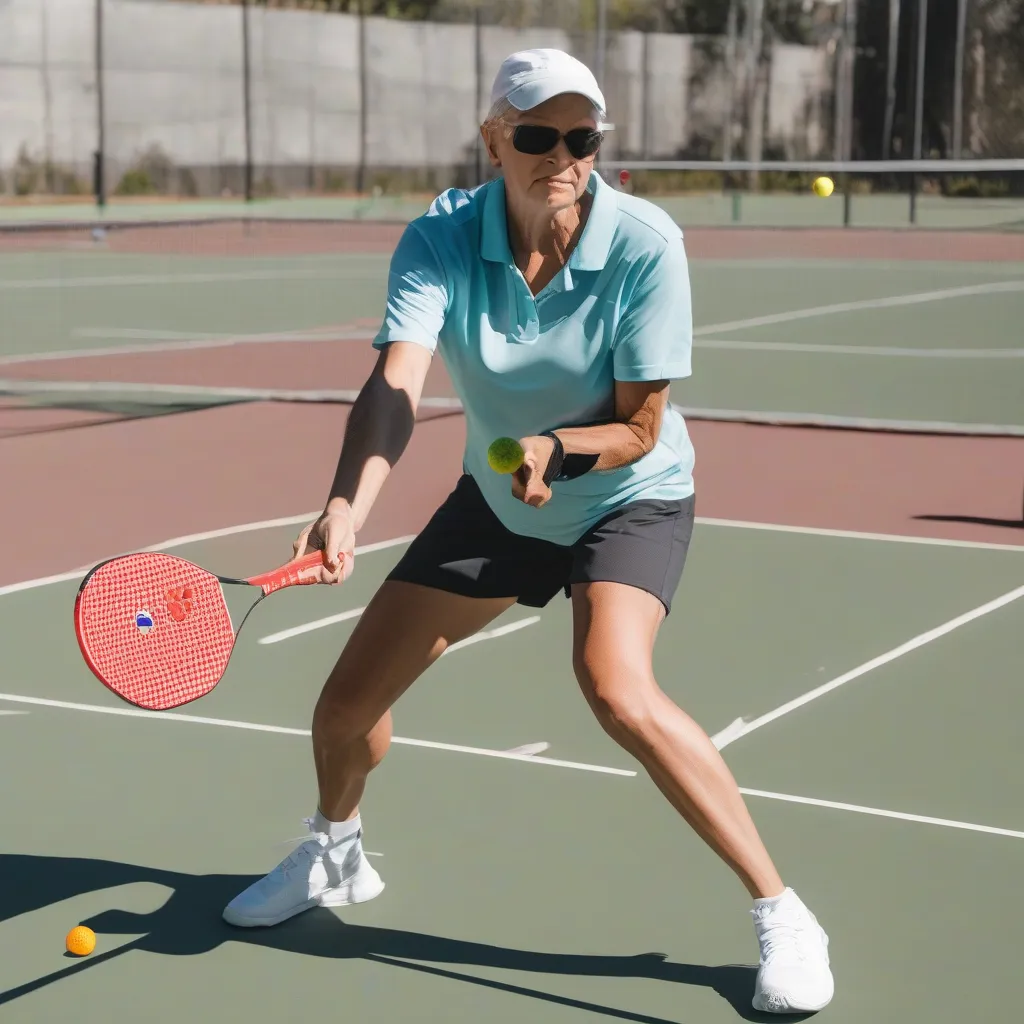Table of Contents
Introduction to Pickleball Backhand Techniques
The backhand shot is a crucial component of any pickleball player’s arsenal. Mastering various pickleball backhand techniques can significantly enhance your game, allowing you to respond effectively to different shots and situations on the court. This guide covers the top 10 backhand techniques to help you improve your skills and dominate the game.
Why Backhand Techniques Are Important in Pickleball
Effective backhand techniques in pickleball offer several benefits:
- Versatility: A strong backhand allows you to handle shots on both sides of your body.
- Control: Mastering backhand techniques helps you place shots more accurately.
- Consistency: A reliable backhand reduces unforced errors and improves overall gameplay.
- Strategic Play: Good backhand skills enable you to execute a wider range of strategies and tactics.
 Pickleball Backhand Techniques
Pickleball Backhand Techniques
Top 10 Pickleball Backhand Techniques
1. Basic Backhand Groundstroke
The basic backhand groundstroke is essential for returning baseline shots. Stand with your feet shoulder-width apart, grip the paddle with both hands or a firm single hand, and swing from low to high. Aim to make contact with the ball in front of your body. This technique provides the foundation for all other backhand shots.
2. Two-Handed Backhand
The two-handed backhand offers greater control and power, especially for beginners. Place your dominant hand at the bottom of the paddle handle and your non-dominant hand above it. Swing with both hands, ensuring a smooth follow-through. This technique is particularly useful for players transitioning from tennis or similar sports.
3. One-Handed Backhand
The one-handed backhand is favored by more advanced players for its versatility and reach. Grip the paddle firmly with your dominant hand and use your non-dominant hand for balance. Swing with a fluid motion, focusing on timing and precision. This technique allows for quicker reaction times and better reach.
4. Backhand Slice
The backhand slice is a defensive shot used to slow down the pace and create low, skidding bounces. Use a slightly open paddle face and swing from high to low, slicing under the ball. This technique is effective for disrupting your opponent’s rhythm and forcing weak returns.
5. Backhand Drop Shot
6. Backhand Volley
7. Backhand Lob
8. Backhand Dink
9. Cross-Court Backhand
10. Backhand Drive
Common Backhand Mistakes and How to Avoid Them
Avoiding common backhand mistakes can help you play more effectively:
1. Poor Grip
2. Inconsistent Follow-Through
3. Improper Footwork
4. Overreliance on One Technique
Resources for Further Learning
For more detailed information on pickleball backhand techniques, explore these valuable resources:
- Visit the USA Pickleball Association (USAPA) for comprehensive guides and tips.
- Explore instructional videos and articles on Pickleball Central.
- Check out detailed reviews and tutorials on Pickleball Portal.
- Learn from top players and coaches on PickleballMAX.
Conclusion
Mastering pickleball backhand techniques is essential for becoming a well-rounded player. By incorporating these top 10 tips into your practice routine, you can enhance your versatility, control, and overall gameplay. Use this guide to refine your backhand skills and take your pickleball performance to the next level. With dedication and consistent practice, you’ll see significant improvements in your backhand shots and overall game.
Frequently Asked Questions
- Why are backhand techniques important in pickleball? Backhand techniques allow you to handle shots on both sides of your body, providing versatility, control, and consistency in your gameplay.
- How can I improve my pickleball backhand techniques? Practice the tips provided in this guide, such as mastering the basic backhand groundstroke, two-handed backhand, and backhand slice.
- What are common backhand mistakes in pickleball? Common mistakes include poor grip, inconsistent follow-through, improper footwork, and overreliance on one technique.
- Where can I find more information on pickleball backhand techniques? Visit the USA Pickleball Association, Pickleball Central, Pickleball Portal, and PickleballMAX websites for comprehensive guides and tips.
- How does footwork affect backhand techniques? Proper footwork ensures you are positioned correctly for each shot, generating power and balance, which are crucial for effective backhand play.